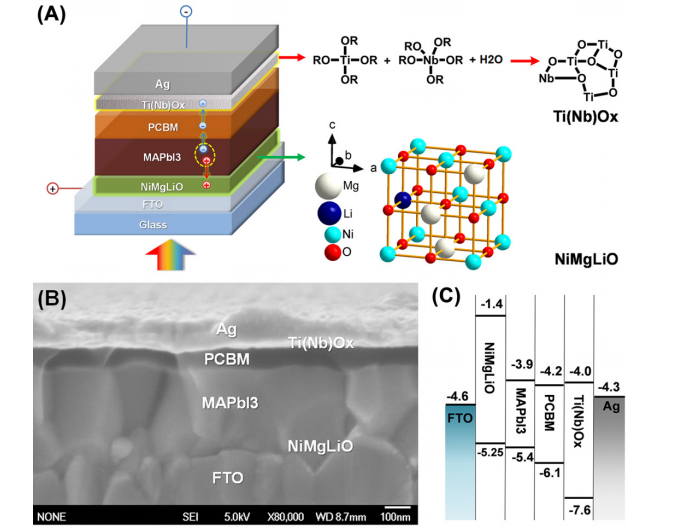October 30, 2015 report
Thin film allows for scaling up perovskite cells and also raises efficiency

A team of Swiss, Chinese and Japanese researchers has found a way to scale up perovskite solar cells without a loss of stability. In their paper published in the journal Science, the team describes their technique and how the results were verified by representatives with the National Institute of Advanced Industrial Science and Technology.
The mineral perovskite has been in the news a lot of late as researchers have been studying it to see if it might one day replace silicon in solar cells. Over the past two years, various groups have found ways to make light harvesting devices that rely on the material, more and more efficient. Holding them back, however, has been an inability to scale them up to a size that can be tested for efficiency in the same way traditional cells are tested, i.e. with an aperture greater than 1cm2. Typically, they have been closer to 0.1cm2 which means they cannot be accredited. The problem has been in finding a way to scale up devices that uses the material without them losing their stability—in this new effort, the researchers report finding a way to do just that, by finding a way around the problem, rather than by solving it.
Instead of changing the perovskite, the researchers added a new element to a device that uses it, a thin film light collector that is placed over the cells. The film was constructed in two layers, one a positively charged cubic rocksalt semiconductor, the other a sheet of negatively charged titanium oxide. Arriving light causes the perovskite layer to be excited which results in liberated electrons moving through the titanium oxide layer on one side of the film while holes are transported through the other. The result is a protective film covering that actually increases conductivity of the device.
In addition to allowing perovskite based devices to be scaled up enough to meet accreditation standards, the film also boosted efficiency—to levels slightly higher than 15 percent. The film was also found to protect the cells from humidity, which has been another factor holding back the development of perovskite based cells that can be used in the real world.
More information: W. Chen et al. Efficient and stable large-area perovskite solar cells with inorganic charge extraction layers, Science (2015). DOI: 10.1126/science.aad1015
ABSTRACT
The recent stunning rise in power conversion efficiencies (PCEs) of perovskite solar cells (PSCs) has triggered worldwide intense research. However, high PCE values have often been reached with poor stability at an illuminated area of typically less than 0.1 cm2. We used heavily doped inorganic charge extraction layers in planar PSCs to achieve very rapid carrier extraction even with 10-20 nm thick layers avoiding pinholes and eliminating local structural defects over large areas. This robust inorganic nature allowed for the fabrication of PSCs with an aperture area >1 cm2 showing a power conversion efficiency (PCE) >15% certified by an accredited photovoltaic calibration laboratory. Hysteresis in the current-voltage characteristics was eliminated; the PSCs were stable: >90% of the initial PCE remained after 1000 hours light soaking.
© 2015 Tech Xplore


















